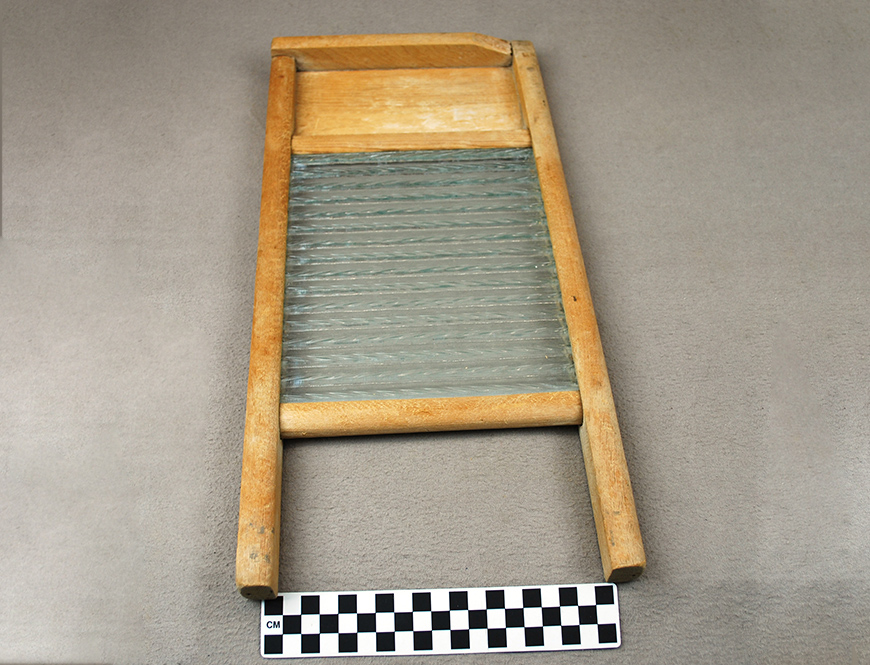This object is a washboard, which was used to wash clothes. Before there were a washing machines and dryers to clean and dry our clothes a washboard and a clothesline were everyday household items. But this was a step up from how clothes were washed before the washboard was introduced into Western Europe. They would have to soak and beat clothes with washing bats to clean them. Some Eastern European countries like Norway and Finland have had washboards made from wood with notches carved into them for centuries but it was not officially patented until 1797. The first washboards were made entirely of wood, but in the 19th Century steel and zinc ridges replaced the wooden ones, but they still had a wooden frame. Later into the 19th century and early 20th century glass washboards, like the one pictured above, were introduced but were not as commonly used as the ones made from metal.
The way to wash clothes with a washboard would be by setting up two tubs one with hot water and another with warm or room temperature water. Once the water is in the tubs you then add the dirty clothes to the tub with hot water in it. It is suggested that the clothes are allowed to sit in the water to loosen up any dirt or stains, but it is not a necessary step to the process. After putting the clothes in the water you will then set the washboard in the tub with the clothes. The soap is then applied; it can be applied in one of three ways. 1) By shaving some off of a bar of soap and adding it into the water. 2) By scrubbing a bar of soap against the washboard. 3) By scrubbing a bar of soap against the clothes themselves. Any way you want to do it you will be adding soap to the clothes and the water. After the soap is applied, the clothes are then be scrubbed one-by-one against the washboard until they are clean. After a piece of clothing has been scrubbed it is then wrung out of any excess water and soap, then rinsed and repeated until the all of the soap is rinsed away. Some people had a machine that would wring the clothes out for them instead of having to do it by hand. After the clothes have been washed they are hung up on a wash line, which consists of a wire or a piece of twine tied between two objects, usually two posts are used, but in cities the line is more often strung between buildings.
